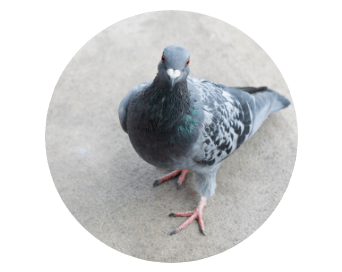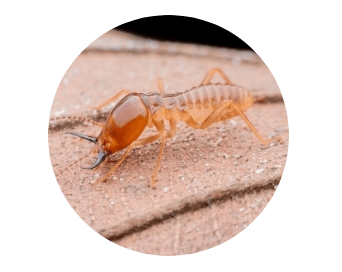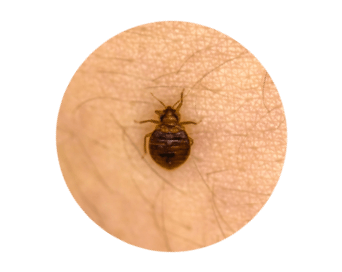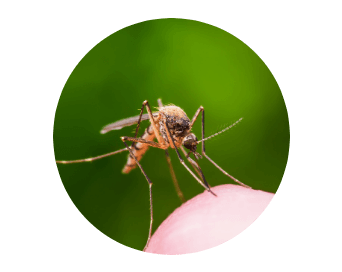Bird Control Service

Bird Control Service
Our custom Bird Control programs use scientifically proven techniques to help make your establishment unattractive to birds and reduce current bird problems. Our techniques follow an Integrated Pest Management (IPM) approach and employ a variety of methods that ensure minimum impact on bird populations and the environment.
Reduced Health Hazards
Birds are known to spread more than 60 transmittable diseases, including Salmonella, histoplasmosis, meningitis, and encephalitis. They also carry fleas, ticks, lice, and mites.
Prevent Structural Damage
Corrosive bird droppings can erode building finishes, causing costly and ongoing maintenance and repairs.
Reduced Liability
Bird droppings can cause slippery walking and working conditions, leading to potential accidents and lost productivity.
Reinforced Brand Satisfaction
When congregating in large numbers, birds are noisy and can be offensive to customers. Customers can have a negative brand experience if they are pestered by birds while on your property.
Many of the bird species in India are good to have around, thanks to their attractive plumage and mesmerizing birdsong. However, when a large number of birds flock together in a roosting site, it can lead to serious consequences such as:
- Contamination of raw materials and finished goods, causing revenue losses.
- Birds can cause property damage by dislodging roof tiles, blocking the guttering systems with their nests, and leaving droppings that corrode building material.
- Safety risks to employees and customers – slippery bird droppings may cause slip and fall accidents.
- Suspension of business and audit failures due to poor hygiene sighted during the inspection.
- Food contamination that may lead to business closure/ suspension by public health authorities.
- Negative impact on business image and reputation.
- Awful sight of bird droppings can discourage potential customers from patronizing.
- Bird droppings may fall on customers, resulting in negative reviews from the bad experience and potential complaints.
- Birds can become aggressive and attack the employees or customers, especially during their breeding season when they are defending their young.
Inspection
Our Technician will conduct a detailed site survey to evaluate your bird problem, including feeding and watering locations, roosting, nesting, and loafing areas, as well as any potential risk to non-targeted species.
Habitat Modification
Habitat modification discourages nesting and roosting. Exclusion is fundamental to an effective habitat modification program, which may include:
- Repellents
- Physical control
- Electronic control
Mechanical Traps
Exterior traps are a temporary, yet effective, solution for birds that do not have strong homing instincts, such as house sparrows and starlings.
Ongoing Monitoring and Maintenance
Our Pest Specialist will conduct regular inspections of your property and equipment installations to evaluate the success of your program, making recommendations, and documenting the effectiveness of our solutions.
While most birds in their natural environment are perfectly harmless, birds can host more than 60 transmittable diseases, including salmonellosis, encephalitis and cryptococcosis. Besides posing potential danger to people’s health, they can also put your business at risk. The key in getting rid of bird infestation is early detection and effective bird deterrent methods by an expert pest controller.
About Birds
Birds are a group of warm-blooded vertebrates constituting the class Aves, characterized by feathers, toothless beaked jaws, the laying of hard-shelled eggs, a high metabolic rate, a four-chambered heart, and a strong yet lightweight skeleton.
They are usually not harmful to humans but are quite a nuisance in most cases
Proactive Bird Control
Birds are the most intelligent pests we encounter. They can adapt to their surroundings and even learn how to fight back against many traditional control methods.
Unfortunately, commercial properties offer food and protective shelter that lead nuisance birds like pigeons, starlings, and sparrows to roost and nest on site. Many of our customers have zero tolerance for nuisance birds because of the diseases they can spread, the structural and property damage they can cause, as well as their annoyance to their customers, guests, and staff.
One open-air shopping center dramatically reduced their risk of infestation from pigeons and smaller birds, including sparrows and swallows.
We work hand in hand with architects and building management during the construction phase – an ideal time to start pest-proofing – to help create a bird-free environment for several multi-story buildings, a parking deck, and outdoor dining areas.
Our plan to address the shopping centers’ pest vulnerabilities:
- A spike in bird activity resulting from construction work
- Exposed ledges and rooftops on building structures
- The open format of the parking garage
- A centralized green space providing food sources for smaller birds
Smaller birds like sparrows and swallows are more difficult to deter and require a proactive approach. Swallows, in particular, are a protected species under the Migratory Bird Treaty Act of 1918, which means nests cannot be relocated until all young have left the nest – a process that could take up to five months. We recommended a combination of products to help prevent birds from nesting on overhangs and ledges, including the installation of:
- Exclusion with netting – Reducing the area’s birds have to land on exposed structures.
- Multi-sensory, gel deterrent – Birds see “dishes of fire” and avoid them immediately.
Additionally, the property required a layered IPM strategy that addressed the conditions attractive to other nuisance birds, to which we recommended:
- Electrical track on all ledges, with special attention to building areas that overlook outdoor dining areas and entryways. The color of the electrical track can be matched to most surfaces and can either be solar-powered or have electrical connections hidden.
- UV paint which helps increase the effectiveness of the electrical track and the gel product. UV paint is a visible deterrent for birds, while humans cannot see it.
By keeping pest management – and specifically bird control – top of mind from the beginning, this property dramatically reduced their risk of nuisance bird infestations.
Learn which bird control methods could work for your property with an inspection.
Because every property is different, effective bird control programs must be tailored to the customer’s unique facility features and local bird populations. And while it’s best to involve the pest experts early on, it’s never too late to develop a program to suit your business’s needs and help stop future bird activity.
A.I.M
Step 1 : Assess
Inspection:
If you have seen any species of bird in your house and it’s hindering your day to day activities. Our Specialist will visit your home and determine the type of bird and specific action that can be implemented to get rid of the bird without damaging the bird or the environment
Step 2 : Implement
Upon completion of the inspection and an assessment of the situation, our specialist will recommend the best course of action. We will recommend a treatment plan based on the severity of the infestation and your preferences. We will use the best tools and science to address the causes and treat your bird problem in the best way for your family, pets, and the environment.
Step 3 : Monitor
Birds can be difficult to eradicate, so our specialist will perform a follow-up visit to help ensure the effectiveness of the professional treatment that was performed. Additionally, our specialist will document the visit and recommend the next steps to ensure the best maintenance approach for your home.
Other Services

Anti-Termite Treatment

Bed Bugs Management

Mosquito Management

Anti-Termite Treatment

Bed Bugs Management
Let's Work Together!
Get rid of those Pests!




